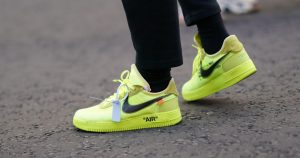Eventually, Rocko and crew learn that The Fatheads has been off the air for years — so like any nostalgic Millennial, they set out to reboot the series. As a stranger in a strange future, it’s really the last connection to the past that Rocko has left. But his mission is also obviously a reflection of the nostalgic energy that made Static Cling possible in the first place. Both Rocko and the audience are instead trying to fill the gaping holes in their hearts with pop culture from the past. (Stares directly at the camera.)
I won’t spoil too much about the film — mostly because it’s very easy to run through everything that happens in its short 45-minute run time. But, as you’d expect, Rocko’s quest to reboot the Fatheads is fraught with obstacles. We quickly learn that cashing in on that show is the only thing that will save its parent company, Conglom-O, from going broke. And in a bid to produce is at a lower cost, they first turn to computer animation: “Make art is easy with computers!,” quips the the snooty, ambiguously European-sounding Chameleon twins. “We can make anything in a passionless and cheap way!,” they add.
Murray, co-director Cosmo Segurson, and their co-writers are clearly positioning hand-drawn animation against CG. But the complaint seems a bit regressive today, especially when the overarching message of the film is about embracing change as the key to happiness. Sure, there’s a lot of lazy computer animation out there, just look at the wildly popular kids content on YouTube. But you could say the same about cartoons of yore that were made as cheaply as possible, with limited frames, low articulation and constantly recycled backgrounds.
Maybe that’s part of the point of Static Cling, though. By casting a critical lens on modern society, once again, Murray and crew force the audience to wrestle with their own habits and assumptions. But that doesn’t mean the creators aren’t guilty of having blindspots of their own (something Rocko also explicitly deals with at the end of the film).




